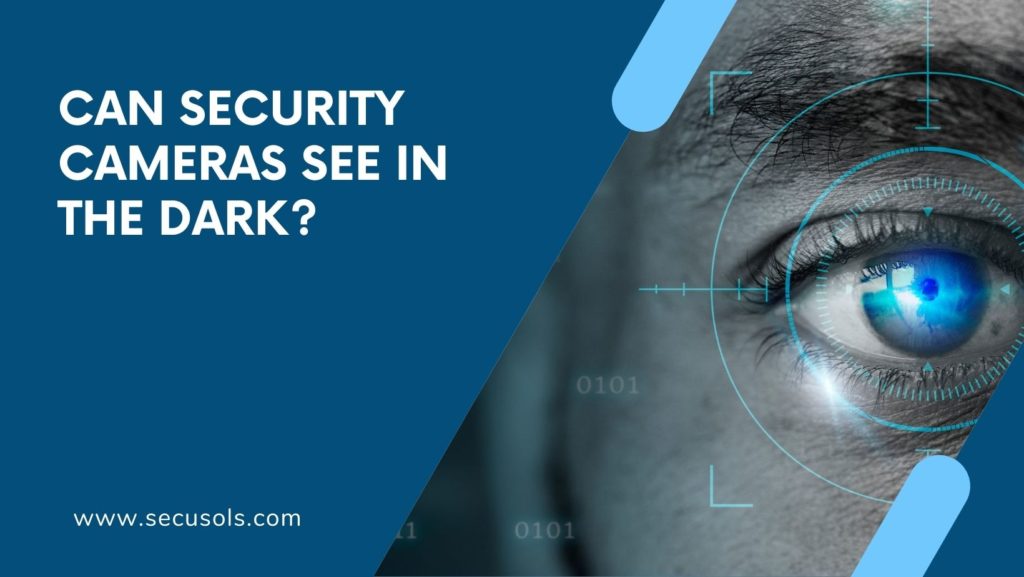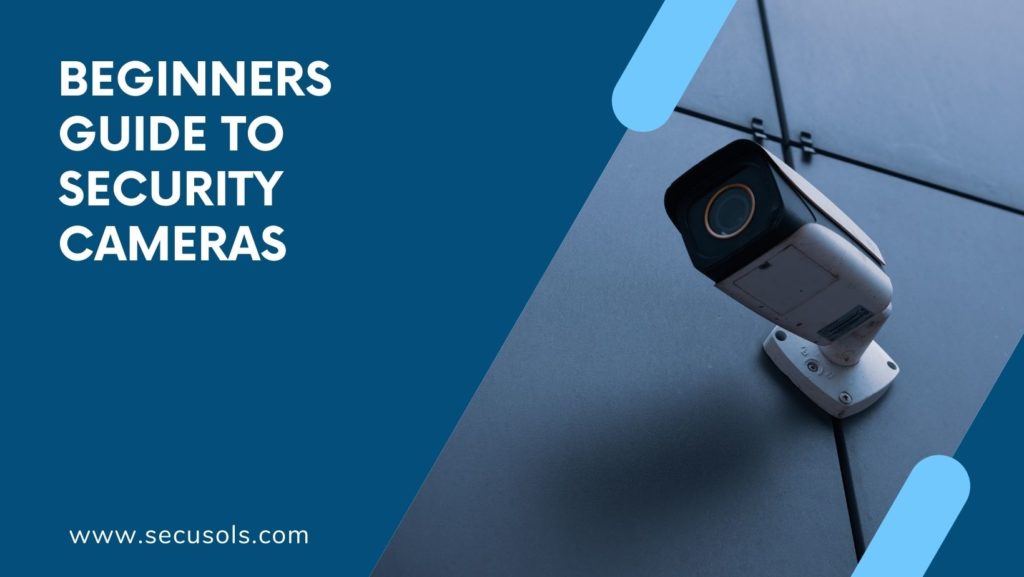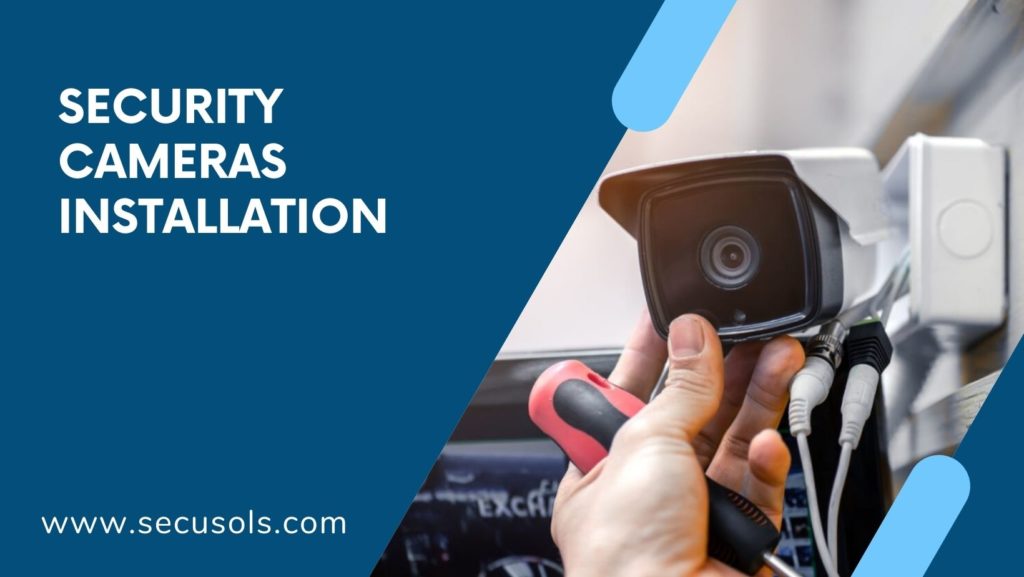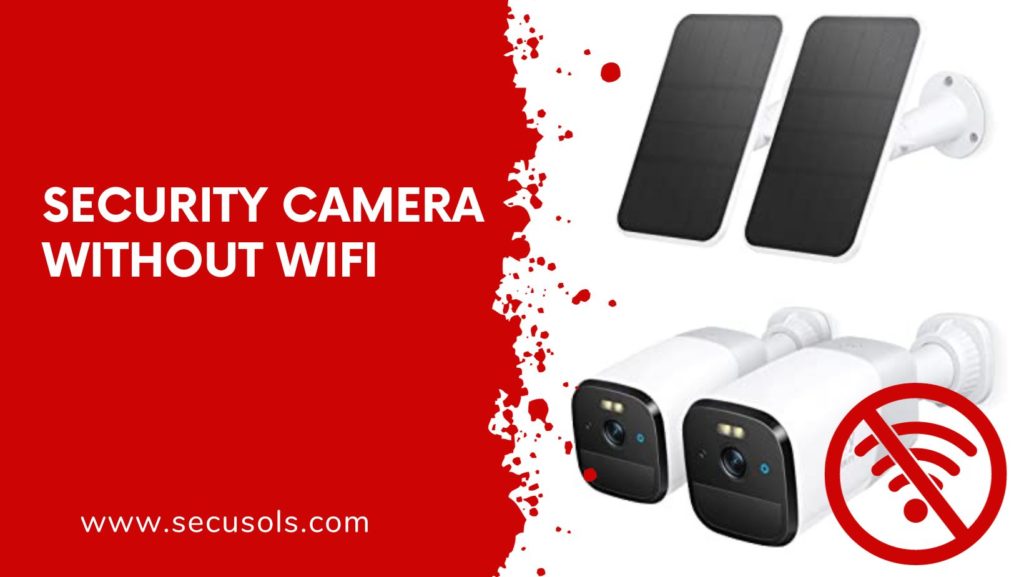Table of Contents
ToggleSecurity cameras have become indispensable tools in modern surveillance systems. They provide an extra layer of protection for homes, businesses, and public spaces. However, their effectiveness can be severely limited when it comes to capturing images in low-light conditions or darkness. In this blog, we will delve into the fascinating world of low-light surveillance and explore the answer of the common question people usually pose; can security cameras see in the dark?
Before answering this question lets understand the image, vision and camera technology used to overcome the light issues.
Understanding Low-Light Vision
A.How human vision works in low-light conditions
Human eyes have evolved to adapt to low-light environments to a certain extent. We rely on specialized cells called rods that are more sensitive to dim light, allowing us to perceive shapes and movement in near darkness. However, our visual capabilities are limited compared to what technology can achieve.
B.The challenges of capturing images in low-light for security cameras
Security cameras, unlike human eyes, cannot adapt to low-light conditions. They rely on technology to capture images, and this technology has its limitations. Without the right tools, they struggle to provide clear and useful footage when light is scarce.
C.The concept of lux and its significance in low-light surveillance
Lux is a measurement of illuminance, representing the amount of visible light falling on a surface. In low-light surveillance, lux plays a crucial role in determining how well a camera can capture images. Understanding this concept is essential for choosing the right security camera for your needs.
Traditional Security Cameras in Low-Light
A.Limitations of conventional security cameras in low-light environments
Conventional security cameras, often used indoors or in well-lit outdoor settings, face significant challenges when it comes to low-light surveillance. Their sensors are not designed to handle darkness effectively.
B.The role of ambient lighting and its impact on image quality
Ambient lighting, such as streetlights or building lights, can improve the performance of traditional security cameras in low-light conditions. However, they still rely heavily on these external light sources, making them vulnerable in cases of power outages or deliberate tampering.
C.Common issues such as noise and blurriness
When traditional security cameras attempt to capture images in low-light conditions, they often produce noisy and blurry footage. Noise can result from the camera’s attempts to amplify the weak available light, while blurriness may occur due to slow shutter speeds used to collect more light.
Can security cameras see in the dark; has been answered by the night vision technology, which has revolutionized low-light surveillance. We’ll discuss different night vision technologies and how they enable security cameras to see in the dark effectively, ensuring your safety and peace of mind.
Night Vision Technology
A. Introduction to night vision technology
Night vision technology has revolutionized the field of surveillance by allowing security cameras to “see” in the dark. This technology enhances the camera’s ability to capture images and footage in low-light conditions, providing a crucial advantage for security and surveillance applications.
B. Types of night vision technology
There are several types of night vision technology that enable security cameras to operate effectively in the dark. Let’s explore these options:
1. Active Infrared (IR) Illumination
Active IR illumination is a commonly used night vision technology that relies on emitting infrared light to illuminate the area being monitored. Security cameras equipped with IR LEDs emit this invisible light, which reflects off objects and is then captured by the camera’s sensor.
2. Passive Infrared (PIR) Sensors
Passive infrared (PIR) sensors are often used in combination with security cameras for motion detection in low-light conditions. These sensors detect the heat emitted by living organisms and trigger the camera to record when motion is detected.
3. Thermal Imaging
Thermal imaging is a highly advanced form of night vision technology.
It captures the heat signatures of objects and living beings, converting them into visible images. Thermal cameras can operate in complete darkness and are ideal for applications where traditional cameras struggle.
C. How night vision technology works in security cameras
Night vision technology equips security cameras with the ability to capture images and footage in low-light conditions by amplifying or converting existing light sources. This enables cameras to provide clear and detailed visuals even when there is minimal ambient light.
Active Infrared (IR) Illumination
Active IR illumination is a cornerstone of night vision technology, widely used in security cameras.
A. Explanation of active IR illumination
Active IR illumination involves the use of infrared light, which falls outside the range of human vision, to illuminate a scene. When IR light is emitted, it reflects off objects and returns to the camera’s sensor. The camera then processes this information, creating a visible image.
B. How IR LEDs are used in security cameras
Security cameras equipped with active IR illumination feature built-in infrared LEDs. These LEDs emit IR light in a controlled manner, ensuring that the camera’s sensor receives sufficient illumination to capture images in the dark. The range and power of IR LEDs can vary, affecting the camera’s low-light performance.
C. Advantages and limitations of active IR illumination
Advantages:
-
- Effective illumination in complete darkness.
-
- Wide range of applications, from home security to industrial surveillance.
-
- Cost-effective solution for low-light environments.
Limitations:
-
- Limited range: The distance at which IR illumination remains effective depends on the camera’s design and the power of the IR LEDs.
-
- Potential glare: Strong IR illumination can create glare in reflective surfaces, affecting image quality.
-
- Reduced detail at longer distances: As the distance increases, image quality may degrade.
D. Examples of security cameras utilizing IR LEDs
Numerous security camera models utilize active IR illumination to provide night vision capabilities. These cameras come in various forms, including dome cameras, bullet cameras, and PTZ (Pan-Tilt-Zoom) cameras. Some popular brands like Arlo, Ring, and Lorex offer a wide range of security cameras with IR LEDs to meet various surveillance needs.
Passive Infrared (PIR) Sensors
Passive Infrared (PIR) sensors are a valuable addition to security cameras, enhancing their ability to detect motion in low-light conditions.
A. Introduction to PIR sensors
PIR sensors are electronic devices that can detect changes in infrared radiation emitted by living organisms, such as humans and animals. These sensors are “passive” because they do not emit any radiation themselves; they merely detect the changes in the ambient infrared radiation.
B. How PIR sensors complement low-light surveillance
PIR sensors are often integrated into security cameras to enhance their motion detection capabilities in low-light or dark environments. When a PIR sensor detects movement, it triggers the camera to start recording, alerting users to potential threats.
C. Applications of PIR sensors in security cameras
PIR sensors are particularly useful in scenarios where traditional motion detection based on visible light is ineffective. They are commonly used in outdoor security cameras, helping to reduce false alarms caused by environmental factors like shadows or blowing leaves.
D. Pros and cons of PIR sensors
Pros:
-
- Highly sensitive to human and animal motion.
-
- Efficient energy usage, as they only activate when motion is detected.
-
- Reduces false alarms compared to traditional motion detection.
Cons:
-
- Limited to detecting motion and cannot provide detailed visual information.
-
- Susceptible to interference from other sources of heat, such as heating vents.
Thermal Imaging
Thermal imaging is an advanced technology that offers unique capabilities for night vision.
A. Overview of thermal imaging technology
Thermal imaging technology captures the heat radiating from objects and living beings and converts it into a visual image. This technology is highly effective in total darkness or challenging weather conditions.
B. How thermal cameras work for night vision
Thermal cameras use specialized sensors called micro bolometers to detect temperature variations. These sensors create thermal images based on the heat emitted by objects, with warmer objects appearing brighter and cooler objects darker in the image.
C. Advantages and limitations of thermal imaging in security cameras
Advantages:
-
- Works in complete darkness.
-
- Excellent for long-range detection.
-
- Unaffected by glare or reflective surfaces.
-
- Effective in adverse weather conditions like fog or smoke.
Limitations:
-
- Typically more expensive than traditional cameras.
-
- Provides less detailed visual information than traditional cameras.
-
- May struggle to identify specific objects or people in the dark.
D. Real-world applications of thermal imaging in surveillance
Thermal imaging finds applications in various surveillance scenarios, including border security, search and rescue operations, and monitoring wildlife. In security, thermal cameras are often used to detect intruders in large outdoor areas.
Combining Technologies for Enhanced Night Vision
To achieve the best low-light surveillance results, combining multiple technologies can be a powerful strategy.
A. Integration of active IR illumination, PIR sensors, and thermal imaging
Security camera systems that integrate active IR illumination, PIR sensors, and thermal imaging provide comprehensive night vision capabilities. Active IR illumination ensures adequate lighting, PIR sensors detect motion accurately, and thermal imaging offers superior detection in complete darkness.
B. Examples of security camera systems that utilize multiple technologies
Leading security camera manufacturers offer products that combine these technologies into single devices, ensuring optimal performance in low-light conditions. These systems are suitable for various applications, from home security to industrial surveillance.
C. The benefits of combining technologies for comprehensive night vision
Combining night vision technologies maximizes security camera effectiveness in challenging lighting conditions. Users can enjoy clear and reliable surveillance, reducing the likelihood of false alarms and ensuring peace of mind.
Factors to Consider When Choosing Night Vision Security Cameras
When selecting night vision security cameras, several crucial factors come into play to ensure effective low-light surveillance:
A. Location and environment
Consider where you intend to install the cameras. Outdoor cameras may require different features, such as weather resistance, compared to indoor cameras. Also, think about the ambient lighting in the area.
B. Budget considerations
Your budget will play a significant role in determining the type and quality of night vision cameras you can afford. Balance your requirements with your budget to make an informed choice.
C. Resolution and image quality
Higher resolution cameras provide clearer images. Invest in cameras with sufficient resolution for your needs, especially if you need to capture fine details in low-light conditions.
D. Coverage area and camera placement
Determine the areas you want to monitor and place cameras strategically to ensure optimal coverage. Consider wide-angle lenses for broader views and PTZ cameras for flexible coverage.
Tips for Maximizing Night Vision Performance
To get the most out of your night vision security cameras, follow these practical tips:
A. Proper camera installation and positioning
Install cameras at the right height and angle for optimal coverage. Ensure they are securely mounted to prevent tampering.
B. Maintenance and cleaning
Regularly clean camera lenses and housings to maintain image quality. Check for obstructions and clear them promptly.
C. Managing ambient lighting
Be mindful of ambient lighting sources that could interfere with night vision technology. Position cameras to minimize glare from lights or windows.
D. Regular firmware updates and software adjustments
Keep your camera’s firmware up-to-date to ensure it functions efficiently. Adjust camera settings as needed to optimize performance in various lighting conditions.
Conclusion
The evolution of security cameras to see in the dark has transformed the way we approach surveillance. With night vision technology, security cameras can now operate effectively in low-light and dark conditions, providing an extra layer of protection for homes, businesses, and public spaces.
Choosing the right night vision security camera involves considering factors such as location, budget, image quality, coverage, and maintenance. By carefully evaluating these factors and following best practices for maximizing night vision performance, you can enhance your security and surveillance capabilities.
As technology continues to advance, we can expect even more innovations in low-light surveillance, further improving the effectiveness of security cameras in the dark. Whether you need to protect your property or ensure safety in challenging environments, the right night vision security camera can make all the difference in maintaining security and peace of mind.





